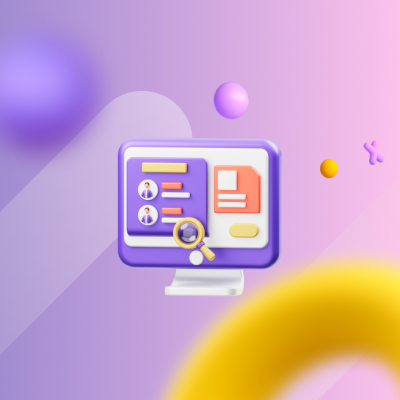
So, you’re ready to incorporate an LMS into your organisation’s learning and development offerings. You should be screening vendors to present you with information on the available LMS solutions, but you don’t know how to start. Well, here are a few tips on how to prepare and produce an effective request for proposal, also known as RFP. An RFP is a document you should use to attract quotes and information from LMS vendors that are adequate for your decision. But, before going into the tips, let’s consider what RFP means.
What is an RFP (Request for Proposal)?
A request for proposal specifies the terms, scope and details of a project and concurrently invites vendors to bid for the contract to execute the project. It is usually prepared by procurement, project management or other related teams of an organisation or body and is posted publicly, typically via traditional media, to announce to prospective bidders or parties. An RFP usually prompts a response from interested parties to execute the project, known as a “bid” and may also be referred to as a request for quotes (RFQ) or a request for information (RFI).
What is the function of an RFP?
The RFP provides all necessary information required for a qualified potential vendor to present a bid to execute a project for you. It covers the objectives of the project, its desired outcomes, the requirements of the client and background to the project, and other relevant information to enable vendors appropriately determine how to bid, what is being bid for, the scope of work and the relevant timelines for execution of the project. It also serves as a guideline in the selection process to determine vendors who meet the stated requirements and evaluate the documentation and the performance of the bidders and selected vendor upon completion.
How to prepare an RFP
- Define your needs, objectives and requirements
- Set the scene
- Provide relevant context
- Set out a schedule
- State expectations
- Request testimonials and endorsements
- Allow for feedback and suggestions
1. Define your needs, objectives and requirements
Start by establishing the needs and objectives of your organisation, as this enables you to know what to communicate to vendors about what your learning management system should accomplish. Do this before writing down anything.
2. Set the scene
Now, it’s time to write the RFP. Your brief should begin with a short description of your organisation, its products or services, size, industry and culture. You should include background information, stating your activities and projects and the locations where you are based.
3. Provide relevant context
Go into detail about the context of the RFP by detailing what you require from vendors to enable you to assess their responses. Explain why an LMS is required in your organisation and how you would like to use it. Include details of what you expect the LMS to achieve. Provide more detail about the scope of the LMS you wish to have, including who the users will be, e.g. the number of employees, roles, experience, and locations. You will also need to provide information about the content the system should deliver, the team responsible for the LMS and the various roles of its members. Essentially, you should meticulously outline your LMS project’s learning, technical, security, application and adaptation requirements.
4. Set out a schedule
Clearly outline the schedule of steps, procedures and timelines which will follow the publication of the RFP. This should cover the approved vendor’s selection process and the installation of the LMS.
5. State expectations
Your expectation of your LMS solution provider must be clearly spelt out, and you should request details of how the vendor(s) expect to achieve the objectives you have stated, a total cost breakdown and any extras. Everything required to effectively and efficiently implement and run the LMS, including training, integration, customisation and service support, should be requested, in the RFP.
6. Request testimonials and endorsements
Proof of concept via case studies, customer endorsements and other forms of evidence that reflect the expertise and capability of the vendor to deliver the LMS successfully should be requested in the RFP.
7. Allow for feedback and suggestions
Bidders should be given room to ask questions, seek clarity or suggest alternative proposals that could be more value-adding and cost-effective. They would need to justify these where they opt to proffer variations from requested specifications.
With these in place, your RFP should have a first draft which frames your RFP layout. Develop it further, fill in any gaps identified and run it by other members of the learning and development team who are well versed in what the project will require. Once approved, issue the RFP by sending it out on relevant media, platforms and forums where potential vendors can be reached. You may also decide to send to specific vendors like My Learning Hub, identified as having the prowess to execute the LMS solution that you require. This document should generate adequate information for your decision.
Once your RFP elicits responses, review the bids for technical and commercial suitability and score responses to the bid, contact shortlisted bidders to finalise your request and proceed to get your LMS solution project implemented.
You can explore RFP samples and RFP templates online if you still want to see what a typical RFP looks like, or you can schedule a demo call with My Learning Hub today to learn how our platform can deliver the results you need to meet your Learning and Development needs.
Frequently asked questions FAQ













